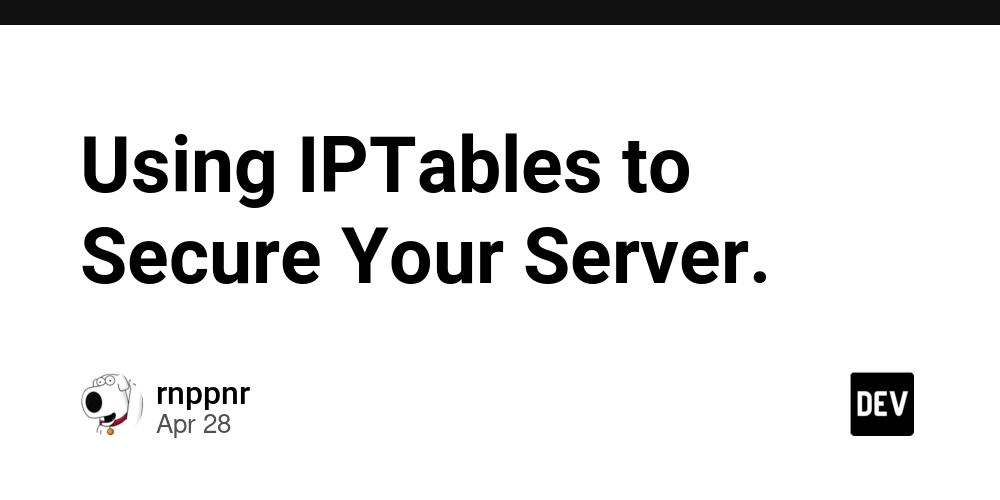Educators reflect on post-COVID learning
The COVID-19 pandemic left an indelible mark on K-12 education, placing immense pressure on teachers as they adapted, literally overnight, to new methods of instruction.


Key points:
- The COVID pandemic changed education–for better, and for worse
- 10 ways COVID changed American schools
- Five years on: COVID’s impact on schools–and what’s next for education
- For more news on COVID-related learning, visit eSN’s Educational Leadership hub
The COVID-19 pandemic left an indelible mark on K-12 education, placing immense pressure on teachers as they adapted, literally overnight, to new methods of instruction. Educators transitioned from in-person teaching to remote learning, often with minimal training or preparation. This shift required them to master new digital tools and vet online learning resources with little notice, all while simultaneously ensuring students remained engaged and on track academically.
Teachers faced significant challenges in delivering effective instruction remotely. Many struggled with students’ lack of access to reliable internet and devices, making it difficult to maintain consistent communication. Educators at all levels spent extra hours developing policies and strategic action plans to meet the varying needs of district students and families.
Beyond academics, educators took on expanded roles as they provided emotional support to students dealing with stress, isolation, and mental health challenges. Burnout became a widespread issue as educators navigated increased workloads, shifting expectations, and concerns for their own health and well-being. Despite these difficulties, the pandemic also highlighted educators’ resilience and adaptability, reinforcing their essential role in shaping students’ learning experiences during unprecedented times.
Now that we’re 5 years out from the pandemic’s onset, how do educators feel about education today?
Too much tech, too quickly?
“I am an elementary technology teacher, so I have really seen how the pandemic affected the technology use of students, and the impacts of that shift. When I began working in schools just before COVID began, most classrooms in our district operated with a cart of iPads, if that. A classroom may have had five devices that had to be shared between the entire class. The onset of COVID brought along the introduction of one to one devices for learners as young as Pre-K, and that change has remained in place since then,” said Alexis Teitelbaum, a tech explorations teacher in Acmetonia Elementary School, in Pennsylvania’s Allegheny Valley School District.
The shift led to improvements, but also led to new bumps in the road for teachers to navigate.
“This impact alone has led to benefits and new challenges. As educators, we are able to incorporate so many new resources and learning methods into our teaching since every student has the ability to work with their own device. I am able to teach very necessary 21st century skills like typing, researching, and properly utilizing online resources at a very early age,” Teitelbaum noted. “Along with this, though, has come a definite increase in students’ technology addiction. We have seen much shorter attention spans, less ability to focus, and new behavioral issues that have come as a result of inappropriate content being so readily available to them.”
Focusing on well-being
Some might say that an increased reliance on or use of technology is a contributing factor to a much larger issue that, while steadily growing before the pandemic, suddenly received much more attention in COVID’s wake: student mental health.
“Mental health support is now a ‘must-do.’ The pandemic underscored the critical role of mental health and social-emotional learning (SEL), prompting a more holistic and proactive approach in schools, said Douglas Fisher, a professor and chair of educational leadership at San Diego State University and a teacher leader at Health Sciences High and Middle College. “The focus on belonging and well-being in schools has shifted from being a luxury afforded by time and resources to an essential pillar of school improvement.”
“What was once considered a ‘may-do’ is now a ‘must-do.’ Teachers now integrate regular check-ins, trauma-informed strategies, and self-regulation practices to create emotionally supportive learning environments,” said Nancy Frey, a professor in educational leadership at San Diego State University and a teacher leader at Health Sciences High and Middle College. “These efforts go beyond academics, ensuring students feel seen, heard, and valued. Educators also use SEL-infused instructional methods to help students develop resilience, self-awareness, and cognitive regulation, which are vital for both learning and life. At the leadership level, schools increasingly collect and analyze wellness data–monitoring attendance trends, behavioral incidents, and student surveys–to identify early warning signs of distress and intervene proactively.”
Fisher and Frey said this data-driven approach enables schools to tailor support systems, enhance counseling services, and foster a culture of care. Importantly, the emphasis on well-being is no longer confined to students. Recognizing that a thriving school culture depends on the health of its educators, districts are investing in adult mental health initiatives, redesigning professional learning communities to foster collective efficacy, and making adjustments that prioritize sustainability. By addressing both student and staff well-being, schools are building stronger, more resilient learning communities where professional, academic, and emotional success go hand in hand, they noted.
What it means to educate
Five years after COVID-19, the leadership team at Ulster BOCES has “gained a deeper understanding of what truly matters in education: mastery, creativity, and identity. We now know that deeper learning happens when students master essential skills, express themselves creatively, and develop a strong sense of identity in their work,” said Peter Harris, the Assistant Superintendent for Learning and Design in the Career Pathways Programs at Ulster BOCES and Jonah M. Schenker, Ed.D., District Superintendent at Ulster BOCES.
“This realization has shaped our approach to creating learning opportunities that are meaningful, relevant, and deeply personal. One of the most transformative shifts has been our expansion of community structures through the belief that ‘we are all crew, not passengers.’ We have embraced the idea that every learner must be seen, heard, and valued. Crew has helped foster belonging and collaboration, making learning more human-centered and student-driven,” Harris and Schenker noted. “At the same time, we have deepened our commitment to career and technical education (CTE) and its role in workforce and economic development. Through stronger relationships with community, employers, and industry partners, we have worked to understand what they value in future employees. Skills mapping with these groups has allowed us to focus on skill-building in an agile way that prepares students for multiple possible futures. By listening to industry leaders, we ensure that students gain in-demand and future-focused skill sets that align with the evolving workforce.”
Most importantly, the district now recognizes that all students deserve the opportunity to:
- Engage in significant learning experiences that challenge and inspire them
- Benefit from mentoring and internships that connect learning to real-world opportunities
- Learn to design solutions, ideas, and innovations
- Think as futurists, preparing for careers that may not yet exist
“These changes have reinforced a fundamental truth: our current school systems were designed for an economy and geopolitical landscape from the 1890s. Today, we must create learning experiences that prepare students for an unpredictable future. By prioritizing deeper learning, crew, and authentic industry partnerships, we ensure that education is not just about preparation–it is about empowerment, adaptability, and leadership in a rapidly changing world,” Harris and Schenker said.
How the right tools impact preparedness
“COVID highlighted areas of continued need in education, particularly in equity and access. The pandemic exposed the disparities in student preparedness across Middlesex County Magnet Schools’ 23 sending districts, emphasizing the need for more standardized expectations of what it means to be ‘high school ready,’” said Katherine Dennison, supervisor of ELA, history, and world languages for Middlesex County Magnet Schools in East Brunswick, N.J.
“One positive outcome was the increased focus on developing targeted educational products, especially for writing skills, which had often been overshadowed by reading and literacy initiatives,” Dennison said. “To support students with a range of writing experience and skill, differentiating instruction is essential. Tools such as NoRedInk allow our educators to use data to group students and scaffold instruction. This has freed them to move away from whole-group learning and adopt a more blended learning approach.”
Teachers remain focused on students and shrinking pandemic achievement gaps.
“As time moves forward, it is evident that our teachers’ dedication to success is unwavering. With appropriate use of data, educational learning tools, and professional development, our teachers continue to close the gap in learning loss (post-COVID) as we see tremendous growth in our students,” she added.
Continued cybersecurity challenges
Five years after the COVID-19 pandemic forced schools and universities to shift online, the education sector is still feeling the effects—especially when it comes to cybersecurity.
“The rapid move to digital learning introduced new security challenges, and many still haven’t caught up. As a former IT Director in public, private, and international education institutions, I can tell you first-hand how unprepared I was. Funding seemed to provide opportunities for small improvements with the FCC Cybersecurity Pilot Program, but few applied and fewer still are convinced it will survive 2025,” said Sam Bourgeois, a cybersecurity operations director and founder of Make IT Secure.
When schools went remote, students and teachers depended on video conferencing, cloud-based platforms, and digital collaboration tools more than ever before. This shift created a larger target for cybercriminals, too.
“Schools became prime targets for ransomware attacks, phishing scams, and data breaches. Even today, most schools remain vulnerable because of outdated security systems and a lack of cybersecurity training for staff and students,” Bourgeois noted. “Schools were unprepared for the security risks that came with remote learning for the most part. Even now, five years later, some institutions are still using quick-fix solutions that were never designed for long-term security.”
For example, Bourgeois outlined:
- Personal devices are still in use, despite the risks of staff and student devices introducing significant risks. Data loss, accidental disclosure, and basically leaving all the doors and windows open to sensitive data are of great concern. Students and teachers continue to use their own computers, likely out of date, vulnerable, and unprotected.
- Cloud-based learning systems remain vulnerable, contrary to our beliefs, hopes, and promises from vendors. Schools rely on Google Classroom, Zoom, Microsoft Teams, SISs and LMSs, but often overlook or bypass security settings. Then there are the breaches calling into question the need for stronger oversight of SaaS (Software as a Service) platforms and vendor risk management in general.
- Data privacy concerns continue as insurance payouts and premiums rise. Student data, including grades and personal information, is a valuable target for hackers, and breaches remain a risk. In fact, 98 percent of attacks were financially motivated (from the 2024 Verizon Data Breach Investigations Report). With COVID, we collected plenty of valuable data; everything from HIPAA data to biometrics!
“To better protect students and educators, schools need to prioritize cybersecurity by investing in better training, stronger authentication methods, and a more secure approach to network infrastructure (with monitoring, response, and automation). While COVID accelerated digital learning, it also exposed weaknesses that must be addressed to ensure safe and secure education in the future,” Bourgeois said. “We need to recognize our kids are simply not ready for the world after grade 12, too. We need better education for all learners… staff included. We need a shift in our thinking to include ‘cybersecurity’ in all that we do. Risk management and cyber hygiene shouldn’t be an afterthought; they should be the foundation of K-12.”







































































